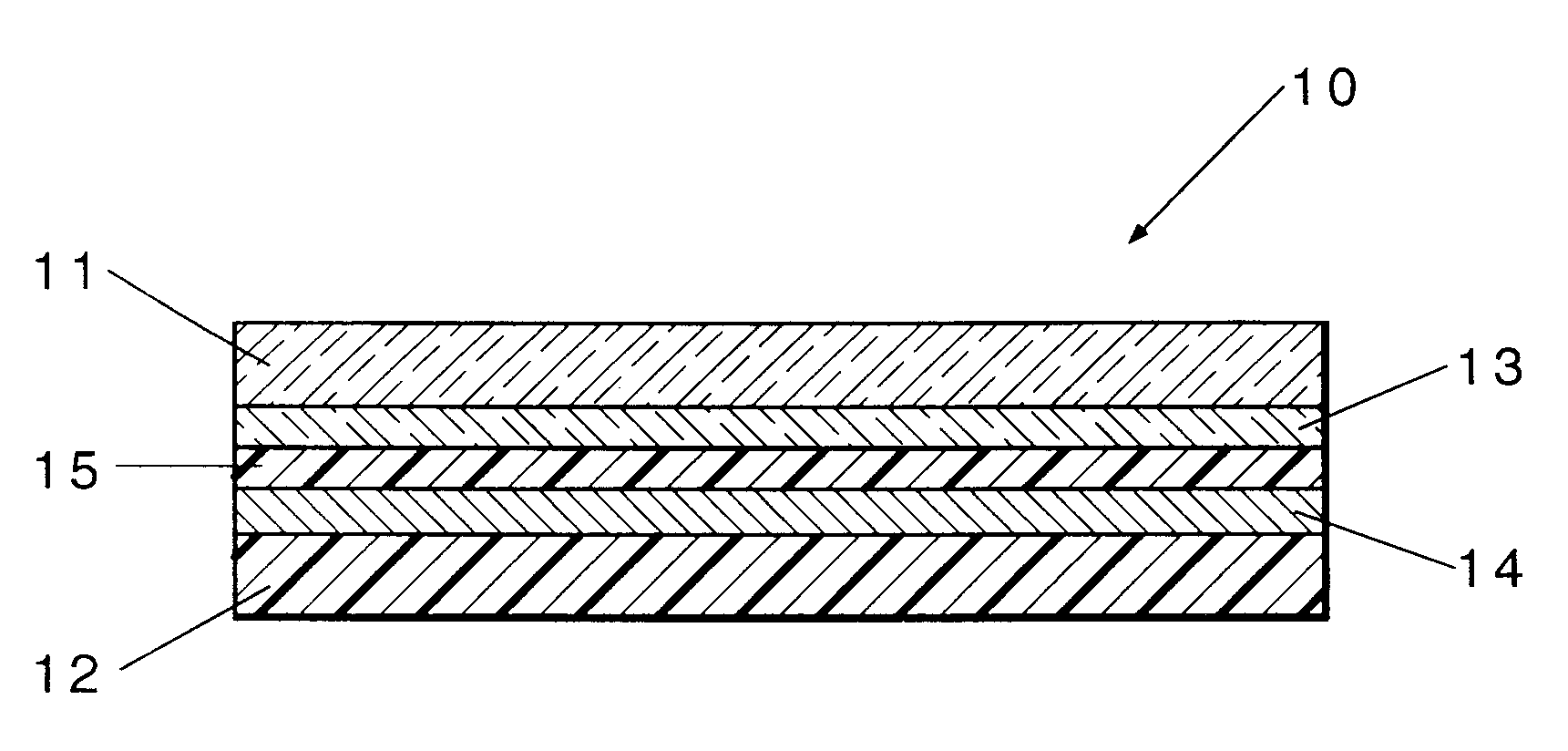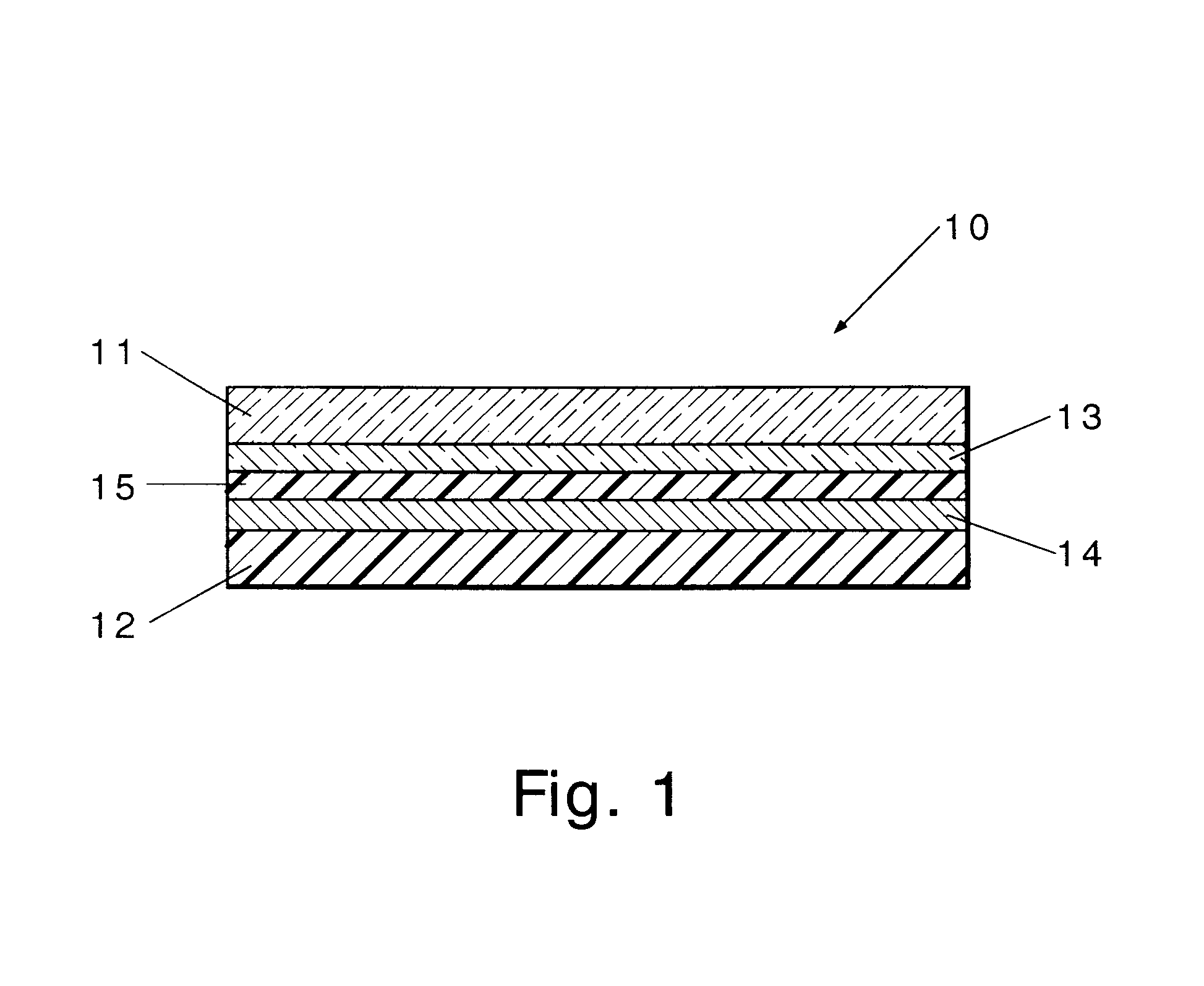Electrochromic display device and compositions useful in making such devices
a technology of display device and electronic structure, applied in the field of electronic structure display device, can solve the problems of system power (voltage) requirements, lack of flexibility in design options, interference with optical properties, etc., and achieve the effects of low power (voltage) requirements, ease of manufacture, and low cos
- Summary
- Abstract
- Description
- Claims
- Application Information
AI Technical Summary
Benefits of technology
Problems solved by technology
Method used
Image
Examples
example 1
The following reagents were mixed in a small mortar and pestle: 1.0 gram hydroquinone; 1.0 gram titanium dioxide; 0.5 gram bromocrescol purple; 0.5 gram 600,000 MW (number average) polyethylene oxide; 0.5 gram 8,000 MW (number average) polyethylene glycol. The materials were ground well. Next, 1.5 grams of isopropanol was added and mixed well. Finally, 1.9 grams of a saturated aqueous solution of sodium chloride was added and mixed. The material was then allowed to sit covered with Parafilm for 24 hours before use. The material was then pressed between 2 pieces of 100 Ω coated glass and 2 pieces of 100 {tilde over (Ω)} ITO PET plastic (both purchased from Delta Technologies, Stillwater, Minn.), which serves as the electrodes. The electrodes were connected to a variable DC power supply with alligator clips. The material began to image (change from bluish to yellow) beginning at around + / −0.7 volt on both the ITO glass and the ITO coated PET plastic; however, a large change in color w...
example 2
The following reagents were mixed in a small mortar and pestle: 1.0 gram KIO3; 1.0 gram titanium dioxide; 0.5 gram bromocrescol purple; 0.5 gram 1,000,000 MW (weight average) hydroxyethyl cellulose. The materials were ground well. Next, 2.5 grams of an aqueous saturated solution of sodium chloride was added. The composition was greenish in color. The composition was then placed between two pieces of ITO coated glass and plastic (PET), as in Example 1. The material changes from yellow to blue at + / −1.5 volts.
example 3
The same recipe and experiment was made as in Example 1, except ethyl red indicator was used instead of the bromocresol purple dye. The material imaged well from red to yellow at 1.5 volts on both ITO glass and plastic (PET).
PUM
 Login to View More
Login to View More Abstract
Description
Claims
Application Information
 Login to View More
Login to View More - R&D
- Intellectual Property
- Life Sciences
- Materials
- Tech Scout
- Unparalleled Data Quality
- Higher Quality Content
- 60% Fewer Hallucinations
Browse by: Latest US Patents, China's latest patents, Technical Efficacy Thesaurus, Application Domain, Technology Topic, Popular Technical Reports.
© 2025 PatSnap. All rights reserved.Legal|Privacy policy|Modern Slavery Act Transparency Statement|Sitemap|About US| Contact US: help@patsnap.com


